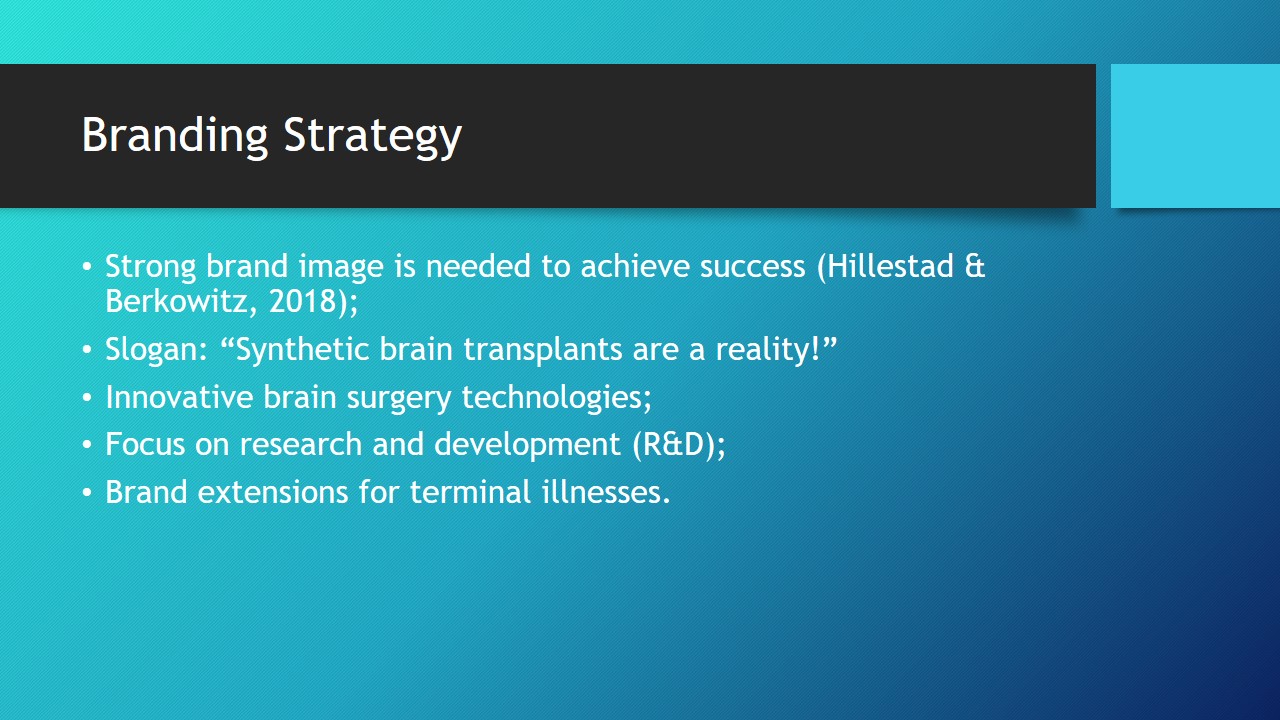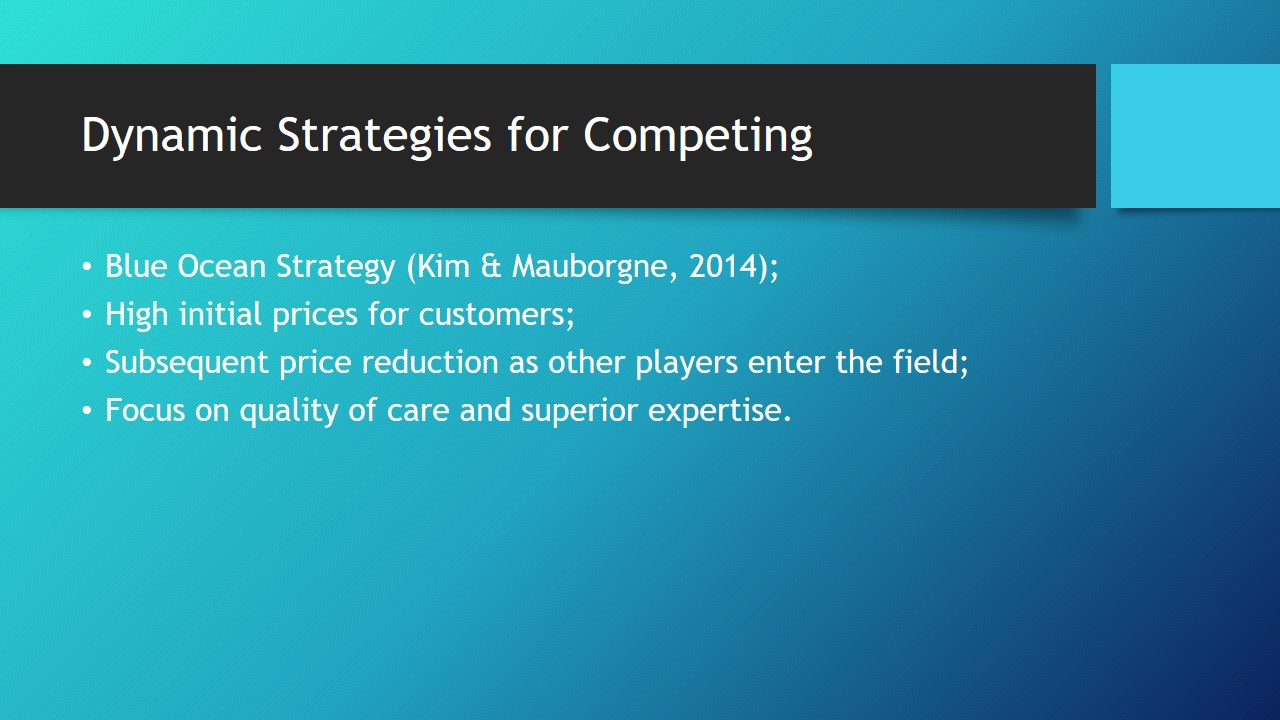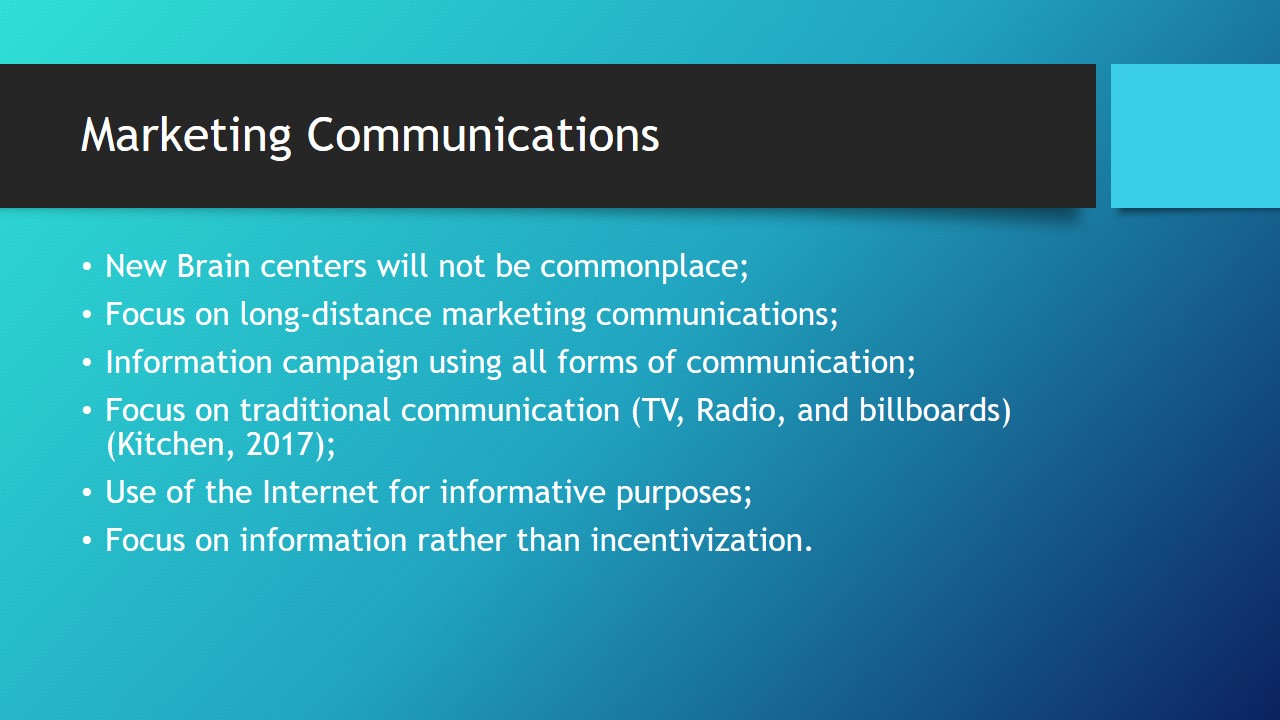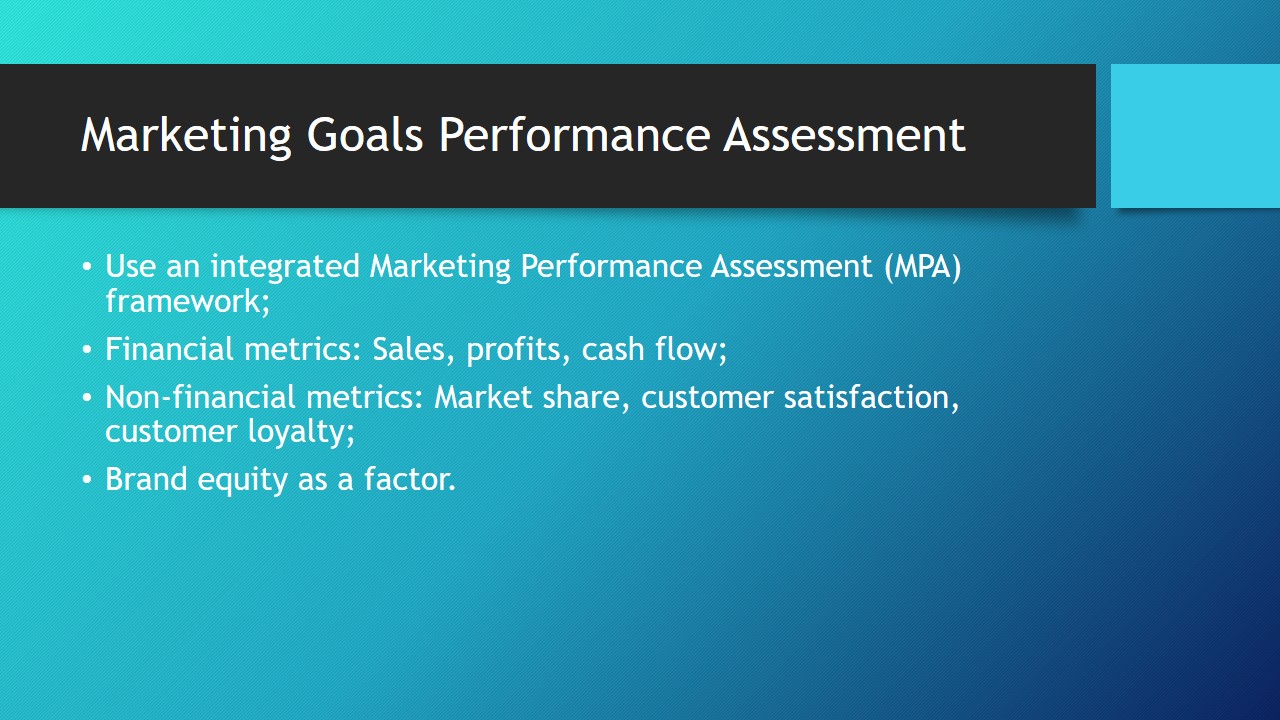Branding Strategy
- Strong brand image is needed to achieve success (Hillestad & Berkowitz, 2018);
- Slogan: “Synthetic brain transplants are a reality!”
- Innovative brain surgery technologies;
- Focus on research and development (R&D);
- Brand extensions for terminal illnesses.
New Brain is company that seeks to introduce cutting edge biotechnological solutions for brain surgery into the healthcare market. The organization’s primary offers include synthetic transplants for individuals suffering trauma and disease as well as other services in surgery, tumor removal, and corrective surgery. The company acknowledges that due to the innovative nature of the offering, it will be met with initial distrust, requiring a strong branding campaign to attract new customers (Hillestad & Berkowitz, 2018). To build up an image of confidence, New Brain needs to offer its services to a wide variety of customers while attracting trustworthy names and specialists to its side. The branding campaign will focus on the superiority of New Brain products and services alongside the presentation of medical evidence of its effectiveness.

Dynamic Strategies for Competing
- Blue Ocean Strategy (Kim & Mauborgne, 2014);
- High initial prices for customers;
- Subsequent price reduction as other players enter the field;
- Focus on quality of care and superior expertise.
New Brain offers a distinctively novel product to the market, one which lacks any analogues at this time. In that case, the company follows the Blue Ocean strategy, which involves claiming significant market share by providing something new rather than engaging in direct competition (Kim & Mauborgne, 2014). For a limited amount of time, New Brain will hold a technical monopoly due to patented technologies of synthetic brain transplantation. Because of this factor, in addition to significant costs of materials, instruments, and expertise, the company should sell its services for a high profit margin. This is a perfect period for creating a strong brand name associated with the product. However, as other competitors would eventually enter the new market of synthetic brain transplantation, the prices should be gradually reduced in order to remain competitive (Ginter, Duncan, & Swayne, 2018). The primary leverage at this point would be the knowledge and expertise in the field, something that competitors would have to work hard to acquire.

Pricing Strategies
- High prices due to high technological requirements (Ginter et al., 2018);
- Focus on high-end customers able to afford the surgery;
- Government reimbursements to allow poor people access;
- Watch for eventual competition;
- Provide explanations for pricing strategies to customers;
- Focus on large cities with superior infrastructure.
As New Brain is a medical company that shares the primary philosophical values of patient-centered care, its pricing strategy should be focused on providing access to life-saving brain surgery to a maximum number of customers. That said, the technology and expertise required to provide such services as well as the lack of reasonable alternatives during the initial period of time warrants a high pricing strategy in order to help the business expand and grow (Ginter et al., 2018). However, as the company becomes better-rooted and acquires customer recognition, it would be prudent to adopt a flowing price strategy in order to maintain their good will (Ginter et al., 2018). Due to the peculiarities and high technological/supply requirements of the venture, New Brain facilities and distribution should be restricted to major cities with an established network of transportation and solid supply chains.

Marketing Communications
- New Brain centers will not be commonplace;
- Focus on long-distance marketing communications;
- Information campaign using all forms of communication;
- Focus on traditional communication (TV, Radio, and billboards) (Kitchen, 2017);
- Use of the Internet for informative purposes;
- Focus on information rather than incentivization.
Since New Brain offers a cardinally novel product to the market, communicating the benefits of the operation to prospective customers would be the primary goal of the marketing communications campaign. Typically, individuals that are in need of a complex brain surgery do not need additional incentives to subscribe to the program, considering that their mental health and livelihood are on the line. Therefore, the primary focus should be made on informing the population of New Brain’s offerings as well as of risks and benefits of the proposed operations. While billboards and Internet ads would work well to make the brand name known, the primary informative value would come from in-depth interviews, demonstrations, and podcasts, which could be presented on TV, radio, and the Internet (Kitchen, 2017).

Marketing Goals Performance Assessment
- Use an integrated Marketing Performance Assessment (MPA) framework;
- Financial metrics: Sales, profits, cash flow;
- Non-financial metrics: Market share, customer satisfaction, customer loyalty;
- Brand equity as a factor.
The proposed marketing performance assessment (MPA) would involve the use of various metrics in order to create a complete and holistic picture of the success or failure of the presented marketing strategy (Hitt, Ireland, & Hoskisson, 2017). The primary assessment criteria would involve financial metrics, such as sales, profits, and cash flows. Although the initial results at the start of the venture are estimated to be low due to low brand recognition and low production output, these metrics are estimated to improve with each year as the general public becomes more aware of the New Brain and its innovative products. Increases in sales, profits, and cashflow would be motivated by non-financial metrics, such as brand equity, market share, customer satisfaction, and customer loyalty. Public awareness as well as word-of-mouth (WOM) would positively affect the company’s image and bring about additional customers (Hitt et al., 2017).

Recommendations
- Diversify the portfolio of available services;
- Integrate with larger healthcare providers;
- Invest in publication of brain surgery-related articles;
- Acquire the services of famous brain surgeons;
- International popularization of synthetic brain transplantation.
The New Brain company will eventually need to update its marketing strategy in order to ensure long-standing success in the medical market and properly react to emerging competition. One of the primary recommendations would revolve around diversifying its portfolio of services to include other areas related to brain surgery. The transformation would not require much in terms of additional personnel and equipment due to similarities of processes, required skills, and interventions (most brain surgeons are qualified and skilled in more than a single type of brain-related surgery). Additionally, the company could seek to integrate with larger hospitals and provide highly-specialized care to the hospital’s patients. In order to ensure the high quality of service as well as brand strength, New Brain should invest in high-quality personnel hired domestically and abroad. Such a strategy would not only build confidence in patients but also attract wealthy customers from around the world engaging in medical tourism.

References
Ginter, P. M., Duncan, W. J., & Swayne, L. E. (2018). The strategic management of health care organizations. New York, NY: John Wiley & Sons.
Hillestad, S. G., & Berkowitz, E. N. (2018). Health care market strategy. New York, NY: Jones & Bartlett Learning.
Hitt, M. A., Ireland, R. D., & Hoskisson, R. E. (2017). Strategic management: Competitiveness and globalization (12th ed.). Boston, MA: Cengage Learning.
Kitchen, P. J. (2017). Integrated marketing communications. Evolution, current status, future developments. European Journal of Marketing, 51(3), 394-405.
Kim, W. C., & Mauborgne, R. A. (2014). Blue ocean strategy, expanded edition: How to create uncontested market space and make the competition irrelevant. Brighton, MA: Harvard business review Press.